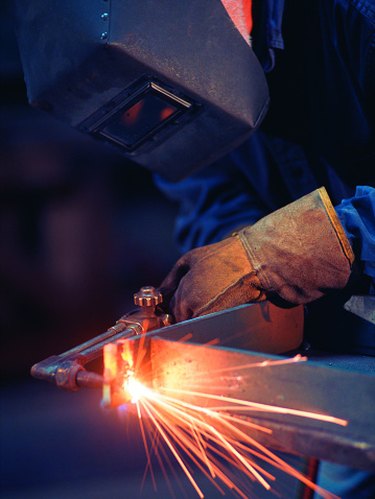
The Clarke 130EN MIG Welder is an electric welder that you can use either as a power source for "metal-inert gas" welding with argon or helium gas, or as a stand-alone electric welder without gas. Advanced do-it-yourselfers and automotive enthusiasts use it for repair and renovation jobs such as building metal staircases, restoring automobile bodies and replacing rusted metal panels. This model is portable and relatively compact, considering its power and versatility.
Electrical Specifications
Video of the Day
The Clarke 130EN MIG Welder works with standard 120 volt AC household current at 13 amperes and 60 Hz frequency. Its output is 30 volts DC at a peak rate of 130 amperes.
Video of the Day
Duty Cycle
The duty cycle of this model is rated at 40% for 60 amperes output. Therefore, the unit must rest for six minutes after four minutes of welding at 60 amperes.
Gas Compatibility
The Clarke WE 6650 adapter included with this welder allows for the use of argon and carbon dioxide mixtures as well as pure argon.
Wire Specifications
The Clarke 130EN MIG Welder is compatible with coppered steel, stainless steel, aluminum and nickel wire for gas welding and fluxcore welding wire for no-gas welding. It accepts 0.023 and 0.035 inch diameter wire for gas welding as well as 0.035 inch fluxcore no-gas welding wire.
Welding Capability
Use the Clarke 130EN MIG Welder to weld metal that is between 1/64 and 3/16 of an inch thick. Its power control has four settings: "1" for 1/64 to 1/32 inch thick metal; "2" for 1/32 to 3/64 inch thick metal; "3" for 3/64 to 3/32 inch thick metal and "4" for 3/32 to 3/16 inch thick metal. It also has a low, medium and high wire speed control switch. Typically use low speed for thinner metal and high speed only for the thickest metal. However, this differs according to the type of metal welded as well as the diameter of wire used.